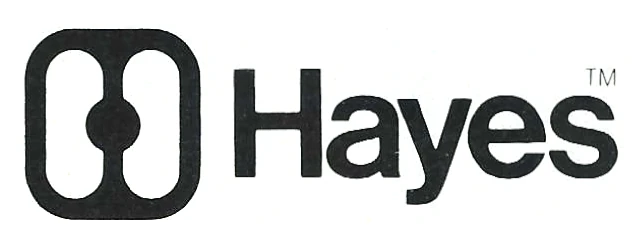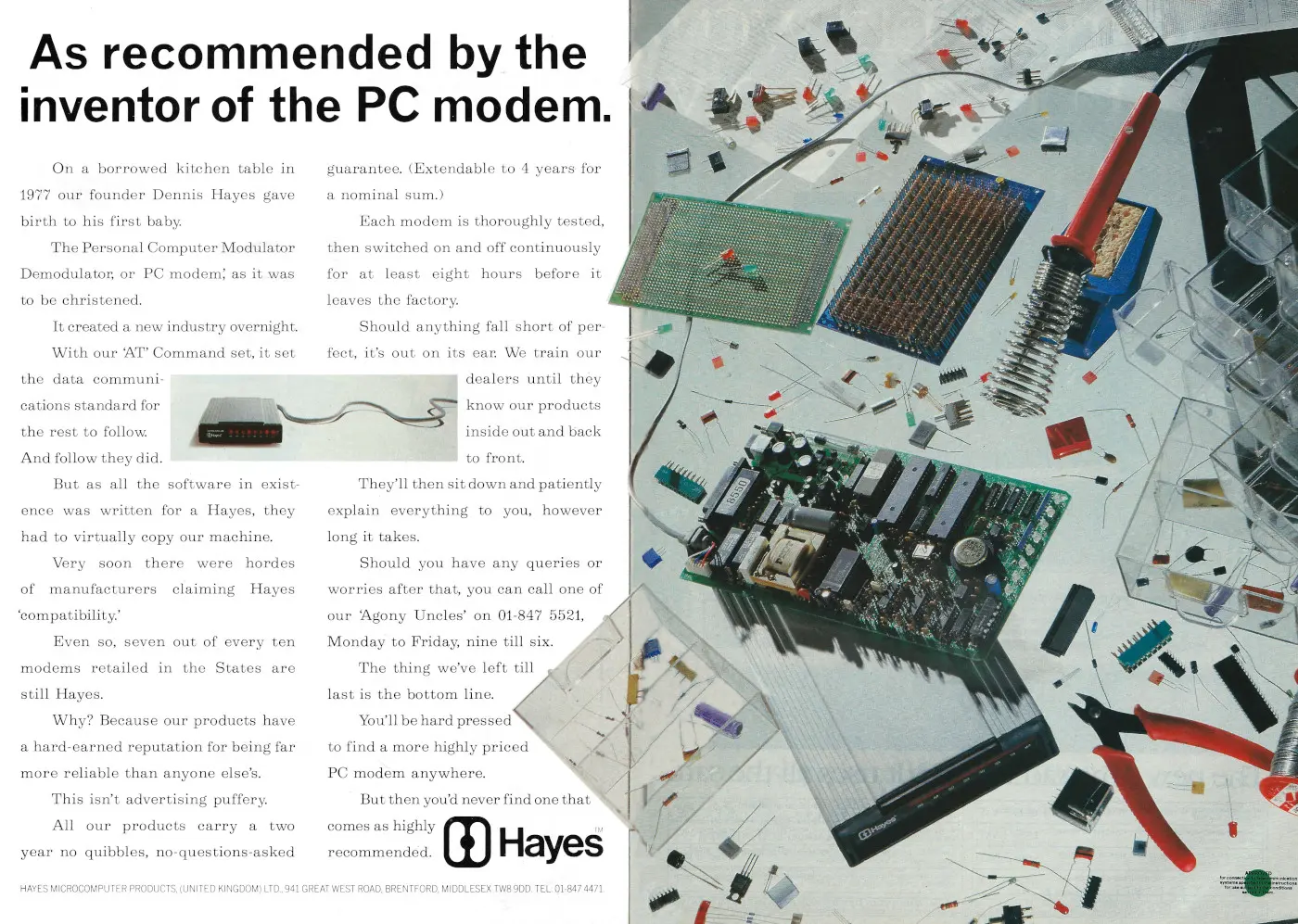
Hayes Advert - February 1987
From Practical Computing

As recommended by the inventor of the PC modem
Hayes did not really "invent" the PC modem, as the devices - a contraction of modulator/demodulator - had been around in some form since the 1920s, although they weren't commercially available until the late 1950s.
Development of the modem was spurred by the SAGE air defense system in the US, which was set up in 1958. This was followed by what seems to be considered the first "modern" modem - Bell's 103 - in 1962.
It was a modem which ran at a speed of 300 baud, where baud meant "symbols per second". Technology at the time was such that one symbol - represented as an audible tone - only represented one bit, so these were effectively 300 bit, or 30 characters per second, devices.
Hayes's modem of 1977 - created by Dale Heatherington and Dennis Hayes - did happen to be the first made specifically for the new wave of personal computers, but in essence it was still a 300 baud modem.
Its most significant contribution though - and the feature that perhaps made the Hayes name more famous than its actual modems, although these were well-regarded - was the introduction of a command language.
This enabled the modem to be programmed simply over its serial-port connection, without any manual intervention by the user.
For instance, rather than having to physically dial a phone number, listen, wait for the connection, and then press a connect button, it was now possible to simply send "ATDT123456" over the serial connection.
All commands started with AT, and the instructions could get quite involved, as a Hayes technical reference manual mentions:
"Dial modifiers can be combined with the dial (D) command to perform a series of operations within a single command line. For example, ATDT9W5552368!@#71234;instructs the modem to use tone dialing (T) to access a number outside a PBX (9), wait for dial tone (W), dial the number 5552368, enter a timed break recall (!), wait for quiet answer (@), and issue the PBX transfer code (#7) before dialing extension number 1234, then return to the command state (;) before initiating the handshake[1]."
This ability transformed modems, and before long most other manufacturers were adding support for the Hayes command set, with it eventually becoming the de-facto modem standard.
In fact, by 1986, the standard was ubiquitous enough that Guy Kewney wrote in Personal Computer World's May 1986 that:
"For a modem to be built so that it is not Hayes compatible is as sensible as making a motor car without wheels, or a computer that won't run COBOL. There is software available - much of it free - all around the world, which assumes you have a Hayes-protocol modem on the end of your computer's serial port[2]".
Modems meanwhile continued developing, with faster baud rates and more data per symbol. By the mid 1980s, speeds were up to 2400 bits per second, or roughly 240 characters per second.
The carrier for these V.22bis modems was still only running at 600 baud, but they used a "quadrature" modulation[3] which meant they could carry four bits per baud, giving the total throughput of 2.4kbps.
The pinnacle of the dial-up modem were the 56k V.90 and V.92 standards in the late 90s. These made use of the fact that most phone networks were by then digital, and so even more data could be crammed in, with the underlying rate now at 8,000 baud.
However, the advent of technologies like ADSL and more ubiquitous fibre connections killed off both the dial-up modem and modem companies like Hayes, which after going through Chapter 11 a number of times was liquidated in 1999.
Modems didn't go away entirely as even fibre circuits still use them. They're just now an almost-invisible commodity device the size of a pack of cards stuck on a wall where the cable comes in, or just built into the cable or DSL router.
Date created: 16 February 2024
Last updated: 11 December 2024
Hint: use left and right cursor keys to navigate between adverts.
Sources
Text and otherwise-uncredited photos © nosher.net 2025. Dollar/GBP conversions, where used, assume $1.50 to £1. "Now" prices are calculated dynamically using average RPI per year.